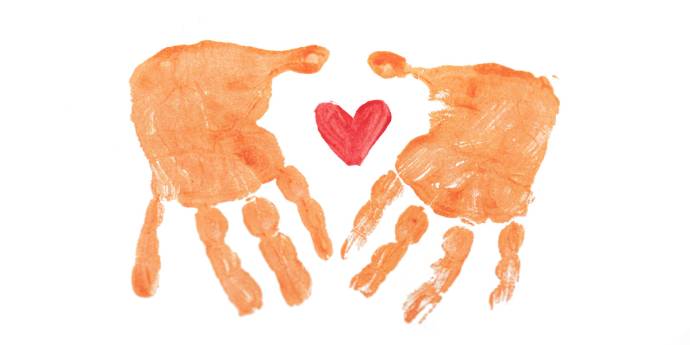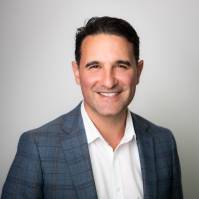Deputy chair designs AI with a ‘heart’

Few charities pull at the heartstrings like the Child Cancer Foundation. It has helped thousands of families whose worlds have suddenly been turned upside down by a cancer diagnosis.
Deputy Chair Dan Te Whenua Walker MInstD has lived that nightmare. Although his son, Joshie, has come out the other side after being treated for bone cancer, the fear of it resurfacing never goes away. And in some of those moments, it is AI that helps Walker deal with the demons. He has been using AI to talk to when feeling worried or down, especially when his son became sick again recently.
“You start thinking, ‘oh, please, hopefully it’s not anything that’s coming back’. One night, it was past 11pm, I had this confidential little talk to an AI I created. It validated my feelings, gave me some mindfulness techniques, reminded me he has the best doctors and the best care. Ultimately, it reassured me that I needed to have trust in all those people helping him with his long-term journey post treatment.
“It helped me get through the evening and then I woke up the next day feeling I could move forward again. It’s surprising how good it is in bringing you down a bit. You can just keep on asking questions until you feel like you can come off that edge,” says Walker, a Microsoft executive who has an extensive focus in the IT and tech sector.

Dan Te Whenua Walker
Walker has designed the AI with a caring, almost nurturing side, tailored specifically for his whānau. The AI is called Te Rau o Te Huia, after Walker’s grandmother, and can speak like her and in te reo as well.
“It is not just for me though, it is for my children as well. One of the things I’m thinking about is their mental wellbeing and helping them deal with some of the crazy things that teenagers deal with these days.”
For the Walker family, that is on top of the long-term effects of cancer, chemo and operations on their wellbeing. “You can easily create a customised AI for a specific child, and I think that’s going to get easier and easier, effectively building AI that is contextual and can speak their language, whether that is Samoan, Māori, Indian or Chinese.”
Child Cancer Foundation chief executive Monica Briggs says the ability to adapt models in different languages and different styles would be enormous and anything that is effective in lowering barriers to access, support and information is a good thing.
“We’ve been looking at apps around mental health and wellbeing so information is available any time a person needs it. It might be a Sunday night when you are at home, or our staff are on call. We are looking at the support we give, such as financial support, that could potentially be done through an AI-type mechanism that also empowers the family. We are also exploring options around helping translate health services into reality for the family and vice versa.
“With this exponential change, it is about how we keep abreast of the possibilities and options and then try to get in at the right point to create that future, rather than it being created for us,” she says.

Monica Briggs
The foundation focuses on the whānau, not the cancer. It supports more than 2,300 families a year through staff and peer-to-peer volunteer-led services, running online programmes for children on treatment, bereaved families and those coming off treatment.
It also gives direct financial assistance and provides psychosocial support for families throughout the cancer journey, advocates for vital services in the paediatric oncology sector and has its impact assessed by an external third party every year.
Walker says the Board, led by chair Dennis Turton MInstD, is in the early stages of its AI competency, but there is good engagement among the members and a willingness to learn and get involved in workshops.
“We have no Luddites. No one fears AI and not wanting to engage with it. That’s a real positive. We are starting to dabble in different AI solutions and the next stage is making sure that, when we do engage, we are protecting confidentiality, promoting safety and then getting the best use out of it to benefit our organisation.
“Our board is committed to a culture of transparency and accountability,” says Walker, “and is defined by great relationships among the board and with Briggs. The decisions made by the board have to be carefully weighed, are relevant to the NFP sector, and to child cancer and health.”
Walker says the board is planning a workshop to talk about how AI is implemented in the organisation, how it is monitored and how it is used.
“We need to be sure we lock down children’s informaton and keep it private, make sure it’s governed and well controlled. We are thinking about those policies and how we can reduce those risks – ensuring we don’t fall into that space of where it is unregulated and going all over the place. I’m excited, but I’m also cognisant of the risks so we don’t want to rush in either.”
“Everyone is so pressured in the health sector. The willingness is there to help each other, but it would be brilliant if there was more infrastructure around that for the not-for-profit sector as a whole – and the more than 28,000 registered charities in New Zealand.”
Briggs says they have been picking up AI tips and tricks and trialling different things internally. “We are incredibly lucky we have got someone like Dan on the board who works for Microsoft and is embedded in the cutting edge and big picture stuff around AI.”
The foundation uses AI packages that are specifically designed for not-for-profit fundraising. “We also use it in our administration and ommunication functions, and we are starting to use it more and more, as staff become more confident. We have had good results. We are looking at staff development and how we can do it in an inclusive, meaningful way so it makes people’s jobs easier.”
Walker says there are AI packages you can buy off the shelf, but the secret is in how you integrate AI into your organisation, streamline operations and making it more efficient, which is especially important for a charity.
Briggs says they are feeling their way, like a lot of NFPs, because there is no guidebook. “We are trying to gain knowledge in a safe and practical
way because there is no model policy, no model operating system. We are learning all the time.
“Everyone is so pressured in the health sector. The willingness is there to help each other, but it would be brilliant if there was more infrastructure around that for the not-for-profit sector as a whole – and the more than 28,000 registered charities in New Zealand.
“We have an AI policy out with the staff – thanks to an early adopter – but we’re going to need some operational guidance underneath the policy. It is quite high level and doesn’t stipulate the types of platforms that are safe for our charity to use.”
Despite its advantages, Walker says it is important to remember, as is the case with technology in general, that we are always sense-checking and not taking its outputs for granted.